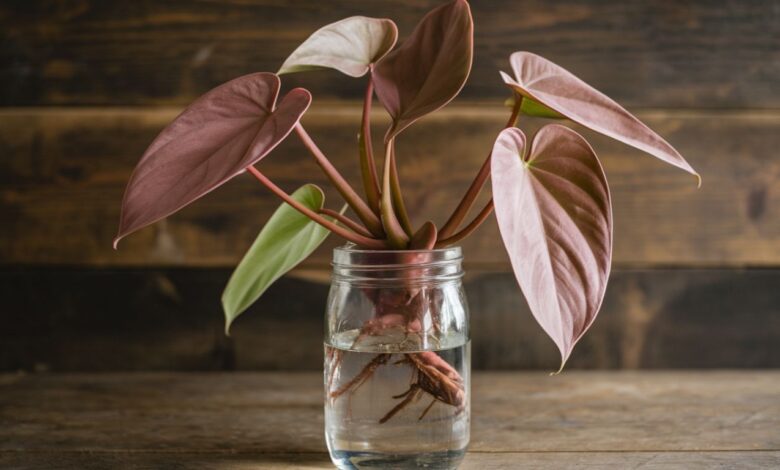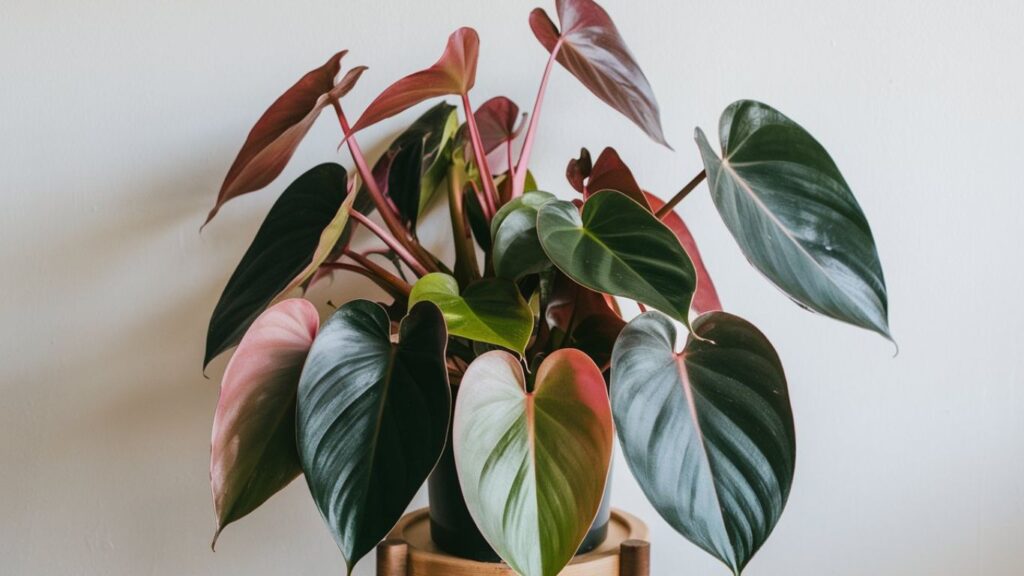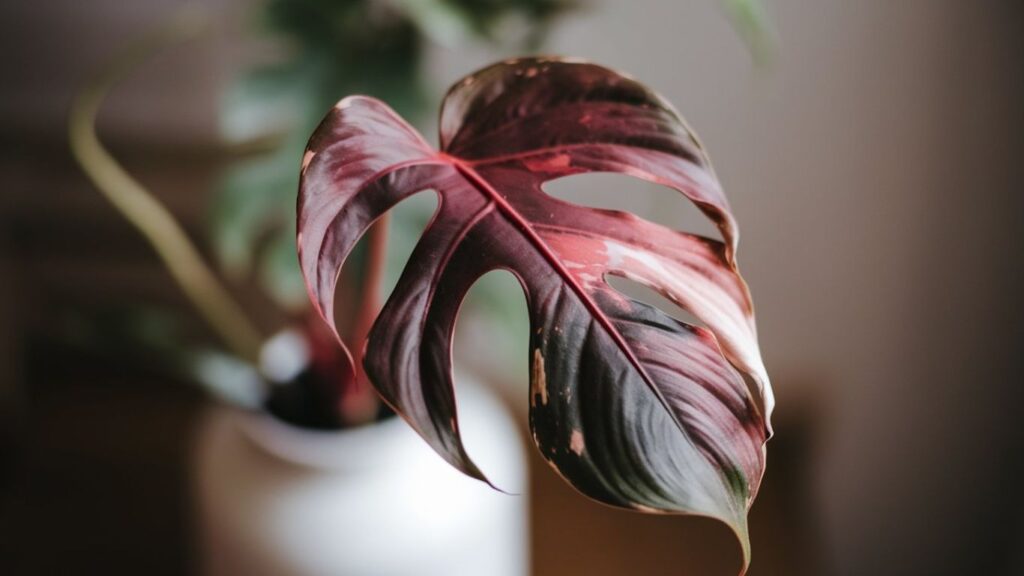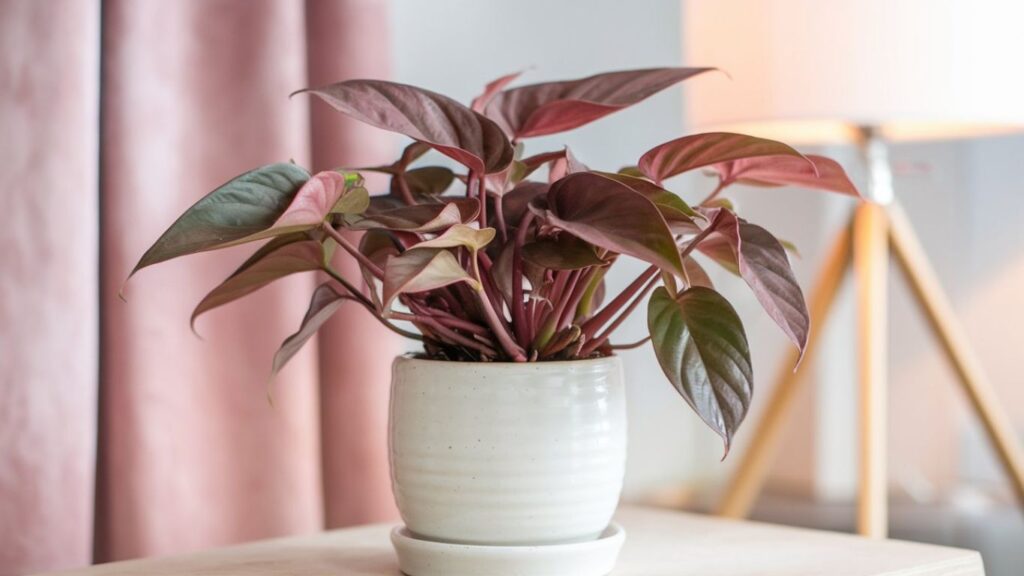From Cutting to Queen: How I Grew My Strawberry Shake Philodendron

Any home that contains a houseplant possesses the valuable treasure known as the Strawberry Shake Philodendron. This majestic plant adds an exquisite touch of exotic charm to any space with its appealing combination of pink, red, cream, and green colors. The process of turning a simple cutting into a flourishing tropical beauty has proven to be both satisfying and compelling in my own experience.
The tropical beauty appeals to plant enthusiasts due to its vibrant colors and embodies characteristics of patience, together with meticulous care and basic gardening abilities. The unpredictable leaf uncurling process resembles opening a continuous present because of its enchanting variegations.
Is the Strawberry Shake Philodendron Rare?

Yes, the Strawberry Shake Philodendron is considered rare due to its unique coloration and limited availability. Unlike other philodendrons, its variegation is naturally occurring but unpredictable, making each plant distinct. This scarcity and individuality drive up both its demand and value.
Many plant collectors go to great lengths to find an authentic specimen, often waiting for months on propagation lists or scouring specialty nurseries online. The rarity adds to the allure, making owning one feel like holding a piece of botanical treasure.
Commercial growers also face challenges when cultivating the Strawberry Shake. Large-scale production is limited because the variegation is unstable and difficult to propagate consistently. This, combined with the plant’s slow growth rate, makes it even more elusive.
Why Is Strawberry Shake Philodendron So Expensive?
Factors including rarity, challenging propagation methods, slow growth rate, and its distinctive, attractive appearance determine the elevated cost. Maintaining the coloration of Variegated philodendrons, such as Strawberry Shak, increases the propagation costs because of their specific propagation requirements.
Growers often propagate through cuttings, ensuring each one contains a node with the desired variegation. Even then, the plant might revert or produce less colorful leaves. This uncertainty increases the time and effort invested in nurturing each specimen.
Moreover, the Strawberry Shake Philodendron doesn’t grow as fast as other houseplants. Growers must wait patiently for new leaves to unfurl and show off their stunning patterns. With every leaf being one-of-a-kind, the visual appeal and exclusivity make it worth the wait—and the price.
How to Care for a Strawberry Shake Philodendron
If you’re lucky enough to own one of these beauties, here’s how to keep it thriving:
Light
Provide bright, indirect light to keep the variegation vibrant. Avoid direct sun, which can scorch the leaves. A north or east-facing window is ideal, or use a full-spectrum grow light if natural light is limited. Variegated leaves contain less chlorophyll, so adequate light is essential for healthy photosynthesis.
Water
Water when the top 2 inches of soil feel dry. Overwatering can lead to root rot, while underwatering may cause drooping or yellowing leaves. Use room-temperature, filtered water to avoid mineral buildup that may damage delicate roots. Consistency is key—erratic watering schedules can stress the plant.
Humidity and Temperature
This plant thrives in a humid, warm environment. Aim for at least 60% humidity and temperatures between 65–80°F. Use a humidifier or pebble tray if needed. Sudden temperature drops can stress the plant, so avoid placing it near vents, windows, or air conditioners.
High humidity encourages new leaf development and prevents crisp edges. During winter months, indoor heaters can lower humidity levels, so monitor it closely and adjust as needed.
Soil
Use well-draining, airy soil with a mix of perlite, orchid bark, and peat moss. This combination allows for good aeration while retaining moisture. The best soil for a Strawberry Shake Philodendron retains moisture without becoming soggy. Adding coco coir or worm castings can improve structure and boost nutrients.
Fertilizer
Feed monthly during the growing season (spring through summer) with a balanced, diluted liquid fertilizer. Avoid over-fertilizing, as it may cause salt buildup or leaf burn. In winter, reduce feeding or stop altogether since the plant enters a slower growth phase.
A good fertilizer will encourage lush foliage and healthier roots, both of which contribute to more vibrant variegation.
Propagating Strawberry Shake Philodendron

Propagation requires care and patience. Start by selecting a healthy stem with at least one visible node and an aerial root. Cut just below the node using sterilized scissors or pruning shears.
Let the cut callous for a day to prevent rot, then place it in filtered water or moist sphagnum moss. Change the water every few days to avoid bacterial buildup. Place the container in a warm, humid area with bright, indirect light.
Once the roots are about 2 inches long, carefully transition the cutting into soil. Keep the humidity high during this period to reduce transplant shock. Root development and adjustment to soil can take several weeks, so be patient.
From Cutting to Queen
My own Strawberry Shake Philodendron began as a single cutting I sourced from a trusted plant collector. I followed a strict care routine—monitoring humidity, using filtered water, and repotting only when necessary. It took months of patience, but each new leaf was a reward in itself.
The first few leaves were modest, showing hints of green and cream. But over time, streaks of pink and red began to emerge, and my excitement grew with every new development. The plant’s personality evolved with every leaf, as no two were alike.
Today, it’s the queen of my indoor garden, proudly showing off her pink-streaked foliage like royalty. This journey taught me more than just plant care—it taught me patience, observation, and the joy of nurturing something over time.
Strawberry Shake vs. Pink Princess Philodendron
Both are hybrids and loved for their variegation, but they differ in appearance and growth behavior. Let’s break it down.
Variegation
Strawberry Shake has creamy, pink, and red hues in a more marbled, watercolor-like pattern. Its variegation appears softer and more dispersed across the leaf surface, often changing dramatically from one leaf to the next.
Pink Princess displays more vivid, solid pink against dark green leaves. The contrast is bolder, and the pink can sometimes appear in large, striking patches. Both are stunning, but their aesthetics appeal to different tastes.
Growth Habit

Pink Princess tends to grow faster and is slightly easier to find. It’s often recommended for those new to variegated philodendrons due to its resilience.
Strawberry Shake, however, is slower and more finicky with its variegation. It may require more light and time to show its full potential, but the results are truly breathtaking.
FAQs
Is Philodendron Strawberry Shake Rare?
The philodendron stands as one of the rarest plant species because propagation occurs rarely while market demand remains high.
Why Is Philodendron Strawberry Shake So Expensive?
Its rarity, slow growth, and striking variegation make it a high-value plant.
How to Care for a Strawberry Shake Philodendron?
Keep it in bright indirect light, water when the soil is dry, and maintain high humidity.
What Is the Difference Between a Pink Princess and a Strawberry Shake Philodendron?
The Pink Princess has darker leaves with brighter pink spots, while the Strawberry Shake has marbled, multicolored leaves.
Which Philodendron Is Expensive?
Besides the Strawberry Shake, other expensive ones include Philodendron Spiritus Sancti, Pink Princess, and White Knight.
How to Make a Strawberry Shake?
Blend fresh strawberries, milk (or milk alternative), ice, and a sweetener until smooth.
What Is the Rarest Philodendron Plant?
Philodendron Spiritus Sancti holds the crown as the rarest and most sought-after philodendron in the world.
Can You Eat Philodendron Fruit?
No, philodendron fruit and foliage are toxic and should not be eaten.
What Is the Most Beautiful Philodendron?
Beauty is subjective, but many consider Strawberry Shake, Pink Princess, and White Knight to be among the most stunning.
What Is the Slowest-Growing Philodendron?
Philodendron Billietiae and Strawberry Shake are known for their slow growth habits.
Is Philodendron Good or Bad?
Philodendrons are excellent indoor plants that purify air, though they are toxic if ingested.
Is Philodendron Black Cherry Real?
No official cultivar is named Black Cherry, but some hybrids may be mistakenly labeled as such.
How to Propagate Strawberry Shake?
Use a stem cutting with a node, root it in water or moss, then transfer to soil.
How Do I Know If My Philodendron Is Healthy?
Bright leaves, steady growth, and no signs of pests or wilting are good indicators.
Is Philodendron Strawberry Shake a Hybrid?
Yes, it’s a hybrid derived from other variegated philodendron species.
Why Is the Philodendron Pink?
The pink coloring comes from mutations or selective breeding that affect pigment expression.
Do Philodendrons Like Moisture?
Yes, they thrive in humid environments.
What Is the Name of the Fuzzy Philodendron?
That would be Philodendron Fuzzy Petiole or Philodendron Squamiferum.
Why Do Philodendron Leaves Drip Water?
It’s a natural process called guttation, where excess water is expelled through leaf tips.
Is Philodendron a Fast-Growing Plant?
Some varieties are, like Heartleaf Philodendron, while others, like Strawberry Shake, are slow.
What Humidity Is Best for Strawberry Shake?
Around 60–80% humidity is ideal.
Conclusion
The Strawberry Shake Philodendron is more than just a pretty plant—it’s a statement of elegance, patience, and care. From a small cutting to a luscious, variegated queen, this plant’s journey is worth every ounce of effort.
Whether you’re a collector or just starting your plant journey, the Strawberry Shake Philodendron will reward you with unmatched beauty and botanical bliss. Embrace the process, celebrate each leaf, and let your green space shine with this tropical treasure.
SEE MORE INFORMATION SO CLICK HERE Buzznewsdaily




